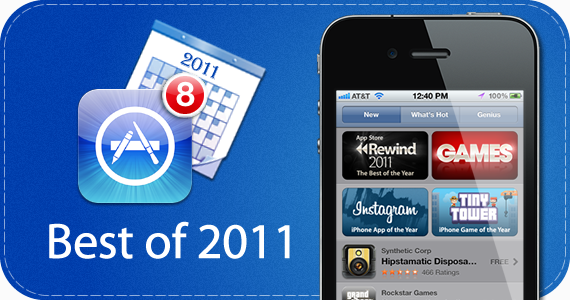This year-end mobile application roundup showcases the most innovative iPhone apps that defined 2011's mobile computing landscape, reflecting the maturation period when the App Store reached 600,000 applications and mobile apps began replacing desktop software for many user workflows. Tony Hue of LonePlacebo provides diverse recommendations spanning augmented reality, photography, voice control, productivity, news consumption, social networking, gaming, and offline reading that show the breadth of mobile computing features achieved during iOS's golden age of innovation. The guest post format represents the collaborative technology blogging culture and advertising network partnerships that characterized early tech media ecosystems.
The application analysis covers breakthrough technologies including Flow's augmented reality product recognition that used camera-based visual search to display Amazon product information for real-world objects, anticipating modern visual search and AR shopping experiences. Microsoft's Photosynth showd sophisticated panoramic photography features with over 4.4 million users, proving that innovative mobile apps could transcend platform loyalties and corporate boundaries. Dragon Go! provided voice-controlled search features as an alternative to iPhone 4S-exclusive Siri, reflecting the democratization pressure that eventually led Apple to expand voice assistant availability across their device lineup.
The productivity and content consumption evaluation highlights NotifyMe's superior reminder features compared to Apple's built-in Reminders app, Zite's personalized news curation that learned user preferences to deliver increasingly relevant content, and Instapaper's offline reading features that addressed connectivity limitations faced by iPod Touch users and data-conscious smartphone owners. The inclusion of Twitter for iPhone's controversial version 4.0 redesign shows how platform-native apps could succeed through simplicity rather than feature complexity, influencing modern app design philosophy that prioritizes user experience over complete features.
This mobile app compilation captures the peak period of iOS app innovation when developers explored diverse interaction paradigms and features categories before market consolidation and platform maturation limited experimental approaches to mobile computing. Looking back 13+ years later, several selections proved remarkably prescient - augmented reality shopping, voice control, personalized news curation, and offline content consumption became fundamental smartphone features rather than novel experiments. The emphasis on Microsoft's mobile app success with Photosynth reflects the early cross-platform period before ecosystem competition intensified and companies prioritized platform-exclusive development. The gaming inclusion of Dead Space shows the technical advancement that enabled console-quality mobile gaming, establishing patterns that eventually led to sophisticated mobile game development and cross-platform gaming ecosystems. The productivity app preferences shown through NotifyMe and Instapaper reflect user demands for alternatives to built-in features that drove the third-party app economy before platform holders incorporated popular features into native experiences. The social newsreading trend represented by Zite anticipated modern algorithmic content curation that now dominates social media and news consumption, though the specific personalized magazine format evolved into feed-based experiences across platforms. This moment represents the period when mobile apps offered genuinely superior experiences compared to mobile web or desktop alternatives, before responsive web design and progressive web apps reduced the features gap between native and web-based mobile experiences.
This summary was created by Dave Rogers. The original post was written by Tony Hue and published on December 1, 2011.
If you'd like to view the original post, you can find it here.
